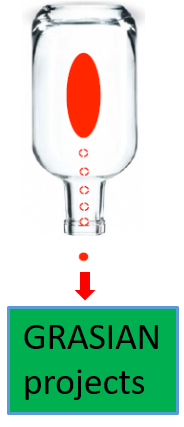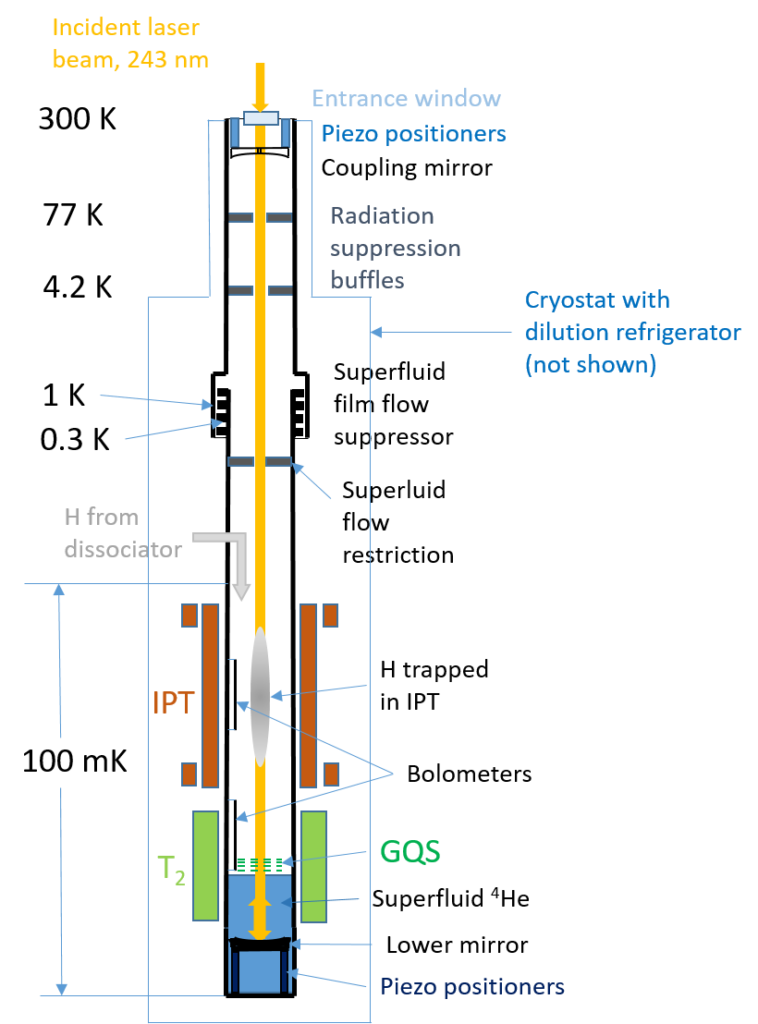
In this project, we are aiming on creating a source of ultra-slow(cold) atomic hydrogen gas which will be used for other projects in GRASIAN. Our source will be based on the known techniques of magnetic trapping and evaporative cooling. We will trap hydrogen gas in a magnetic bottle created by a special configuration of currents known as Ioffe-Pritchard trap (IPT). Lowering the barriers of the trap will allow atoms with largest energies escaping from the trap. Such evaporation over the magnetic barrier will lead to effective cooling of the gas remaining in the trap.

Our trap will have ~100 times larger volume than MIT trap, and ~7 times larger than the Alpha collaboration trap in CERN. The initial trapping barrier height will be ~0.9 T (~0.6 K) The atoms will be loaded from cryogenic dissociator into the sample cell inside the IPT. At the first stage of evaporative cooling we will gradually lower the trapping fields and reach temperatures below 1 mK in the cloud of 1013-1014 H atoms at density of ~1013-1014 cm-3. H gas will be maintained nearly at thermal equillibrium at this stage, which is necessary for evaporative cooling.
The prototype of the Ioffe-Pritchard trap is currently built in Turku. The trap is composed of eight linear current bars (Ioffe bars) formed by eight superconductive magnets of race-track shape. Such Octupole system provides magnetic field with zero in the center and increasing radially as r3. A pair of circular coils in the upper and lower ends of the Octupole system willl provide magnetic field barriers along vertical axis. Additional circular coil above the upper pinch coil will create magnetic field of 3.5 T required to operate cryogenic hydrogen dissociator.

Further cooling of atoms requires lowering magnetic barriers below 10 G, which is difficult to control with the large IPT. Therefore, we plan to transfer the atoms to a second trap T2 built from low inductance (copper) coils and located below IPT. This trap will have smaller size and a possibility to switch between the multipole (8 – 32 poles) and quadrupole configurations for radial confinement. We hope to get easy and fast control of magnetic fields in the T2 in the range 0.1-10 G. Working with high density gas in thermal equillibrium we plan co reach conditions of BEC. For a number of other experiments of GRASIAN, especially studies of the Gravitational Quantum States, we will select atoms with the slowest vertical velocities. This will be done by selective RF or optical excitation, removing fast atoms from the trap. After such truncation in the phase space, we plan to get 108-109 H atoms with vertical velocity of several cm/s. Experiments with precision optical and microwave spectroscopy will benefit from such slow atoms. Experimental setup which will be built in Turku is shown schematically on the picture.

During spring and summer 2020 the IPT prototype has been built in Turku. The trap has inner diameter of 10.6 cm and length of 35 cm, which makes it the largest trap ever used for hydrogen (or anti-hydrogen). We tested the trap in liquid helium at 4.2 K and reached maximum height of 0.9 T. Now (autumn 2020) we are installing the trap into the cryostat with dilution refrigerator, where it will operate in vacuum at 1.5 K. With some small improvements we hope to enhance it’s performance and stability.
